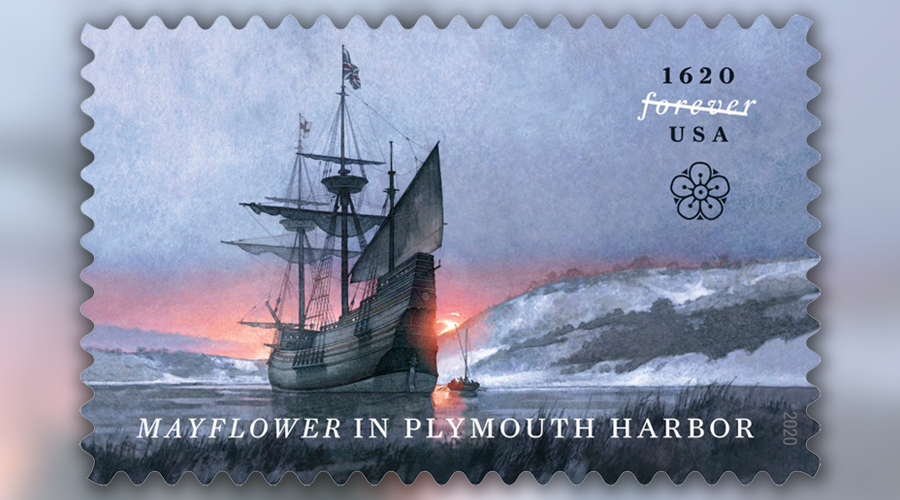To help mark the recent release of the Mayflower in Plymouth Harbor stamp, here are three facts about the famed merchant ship that brought America’s early settlers to the New World.
1. The Mayflower’s journey lasted several months. On Sept. 6, 1620, the Mayflower and its more than 100 passengers set sail from Plymouth, a port on England’s southern coast. The perilous journey across the Atlantic ended on Dec. 16 — more than 100 days later — when the Mayflower anchored offshore in what is known today as Plymouth, MA.
2. The Mayflower’s passengers would become known as the Pilgrims. The story of their settlement is intertwined with the story of the Wampanoag — People of the First Light — who made an alliance with the Pilgrims and forged a treaty with them that maintained relative peace for more than 50 years. The Pilgrims might not have survived their first year without the help and advice of the Wampanoag, with whom they celebrated their first harvest in the fall of 1621. The Mayflower Compact, Plymouth Rock and Thanksgiving all became part of the enduring legacy of this tiny band of settlers.
3. The Mayflower in Plymouth Harbor stamp honors the 400th anniversary of the ship’s arrival. Artist Greg Harlin illustrated the stamp — using a combination of watercolor, gouache and acrylics, with some digital refining — to convey a scene of desolate beauty at the end of the Pilgrims’ harrowing journey. The stamp also features a stylized hawthorn flower printed in intaglio. In England, the hawthorn — a member of the rose family — is sometimes called a mayflower because it blooms in May.
